Refine search
Actions for selected content:
106102 results in Materials Science
Magnetic tunnel junctions using LaSrMnO ferromagnetic electrodes and PbZrTiO3 piezoelectric barrier
-
- Journal:
- Journal of Materials Research / Volume 24 / Issue 10 / October 2009
- Published online by Cambridge University Press:
- 31 January 2011, pp. 3065-3072
- Print publication:
- October 2009
-
- Article
- Export citation
MRS volume 34 issue 10 Front matter
-
- Journal:
- MRS Bulletin / Volume 34 / Issue 10 / October 2009
- Published online by Cambridge University Press:
- 31 January 2011, p. f1
- Print publication:
- October 2009
-
- Article
-
- You have access
- Export citation
YVO4: RE3+ (RE = Eu, Sm, Dy, Er) nanophosphors: Facile hydrothermal synthesis, microstructure, and photoluminescence
-
- Journal:
- Journal of Materials Research / Volume 24 / Issue 10 / October 2009
- Published online by Cambridge University Press:
- 31 January 2011, pp. 3050-3056
- Print publication:
- October 2009
-
- Article
- Export citation
Classified
-
- Journal:
- MRS Bulletin / Volume 34 / Issue 10 / October 2009
- Published online by Cambridge University Press:
- 31 January 2011, pp. 770-775
- Print publication:
- October 2009
-
- Article
-
- You have access
- Export citation
Work-hardening mechanisms of the Ti60Cu14Ni12Sn4Nb10 nanocomposite alloy
-
- Journal:
- Journal of Materials Research / Volume 24 / Issue 10 / October 2009
- Published online by Cambridge University Press:
- 31 January 2011, pp. 3146-3153
- Print publication:
- October 2009
-
- Article
- Export citation
Synergistic effect of crystalline metal on the plasticity of bulk metallic glasses under uniaxial synchro-compression
-
- Journal:
- Journal of Materials Research / Volume 24 / Issue 10 / October 2009
- Published online by Cambridge University Press:
- 31 January 2011, pp. 3099-3107
- Print publication:
- October 2009
-
- Article
- Export citation
Ga-Substituted Hydrotalcites Capture CO2 at Elevated Temperatures
-
- Journal:
- MRS Bulletin / Volume 34 / Issue 10 / October 2009
- Published online by Cambridge University Press:
- 31 January 2011, p. 710
- Print publication:
- October 2009
-
- Article
-
- You have access
- Export citation
Aging-induced double hysteresis loops in bismuth-doped (Ba,Ca)TiO3 ferroelectric ceramics
-
- Journal:
- Journal of Materials Research / Volume 24 / Issue 10 / October 2009
- Published online by Cambridge University Press:
- 31 January 2011, pp. 3073-3077
- Print publication:
- October 2009
-
- Article
- Export citation
Nanoprobe Crosses Blood-Brain Barrier to Image and Treat Tumor
-
- Journal:
- MRS Bulletin / Volume 34 / Issue 10 / October 2009
- Published online by Cambridge University Press:
- 31 January 2011, pp. 711-712
- Print publication:
- October 2009
-
- Article
-
- You have access
- Export citation
The grain refinement mechanism of electrodeposited copper
-
- Journal:
- Journal of Materials Research / Volume 24 / Issue 10 / October 2009
- Published online by Cambridge University Press:
- 31 January 2011, pp. 3226-3236
- Print publication:
- October 2009
-
- Article
- Export citation
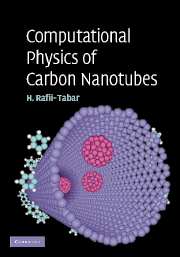
Computational Physics of Carbon Nanotubes
-
- Published online:
- 29 September 2009
- Print publication:
- 13 December 2007

Recombination in Semiconductors
-
- Published online:
- 22 September 2009
- Print publication:
- 31 January 1992
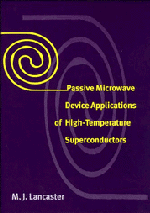
Passive Microwave Device Applications of High-Temperature Superconductors
-
- Published online:
- 14 September 2009
- Print publication:
- 13 February 1997
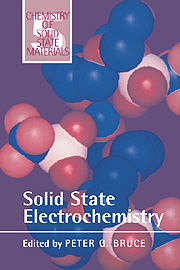
Solid State Electrochemistry
-
- Published online:
- 14 September 2009
- Print publication:
- 08 December 1994
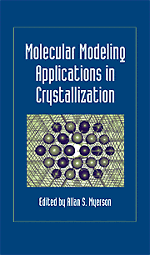
Molecular Modeling Applications in Crystallization
-
- Published online:
- 11 September 2009
- Print publication:
- 28 June 1999
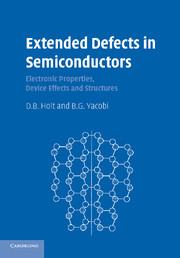
Extended Defects in Semiconductors
- Electronic Properties, Device Effects and Structures
-
- Published online:
- 10 September 2009
- Print publication:
- 12 April 2007
Molecular, Supramolecular, and Macromolecular Motors and Artificial Muscles
-
- Journal:
- MRS Bulletin / Volume 34 / Issue 9 / September 2009
- Published online by Cambridge University Press:
- 31 January 2011, pp. 671-681
- Print publication:
- September 2009
-
- Article
-
- You have access
- Export citation
Plastic zone at crack tip: A nanolab for formation and study of metallic glassy nanostructures
-
- Journal:
- Journal of Materials Research / Volume 24 / Issue 9 / September 2009
- Published online by Cambridge University Press:
- 31 January 2011, pp. 2986-2992
- Print publication:
- September 2009
-
- Article
- Export citation
Dielectric properties and energy storage capability of antiferroelectric Pb0.92La0.08Zr0.95Ti0.05O3 film-on-foil capacitors
-
- Journal:
- Journal of Materials Research / Volume 24 / Issue 9 / September 2009
- Published online by Cambridge University Press:
- 31 January 2011, pp. 2993-2996
- Print publication:
- September 2009
-
- Article
- Export citation
Lost Materials
-
- Journal:
- MRS Bulletin / Volume 34 / Issue 9 / September 2009
- Published online by Cambridge University Press:
- 31 January 2011, p. 704
- Print publication:
- September 2009
-
- Article
-
- You have access
- Export citation
